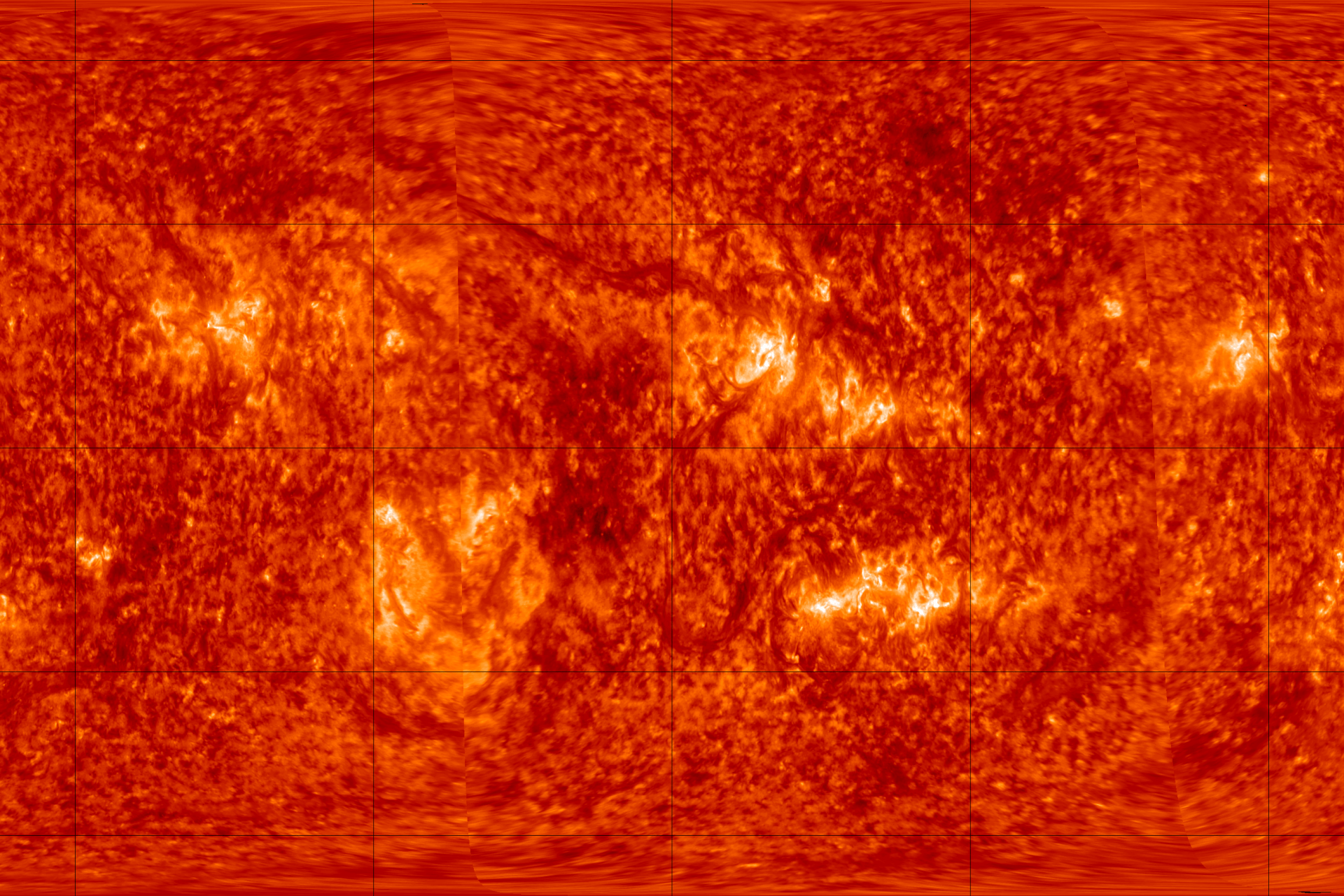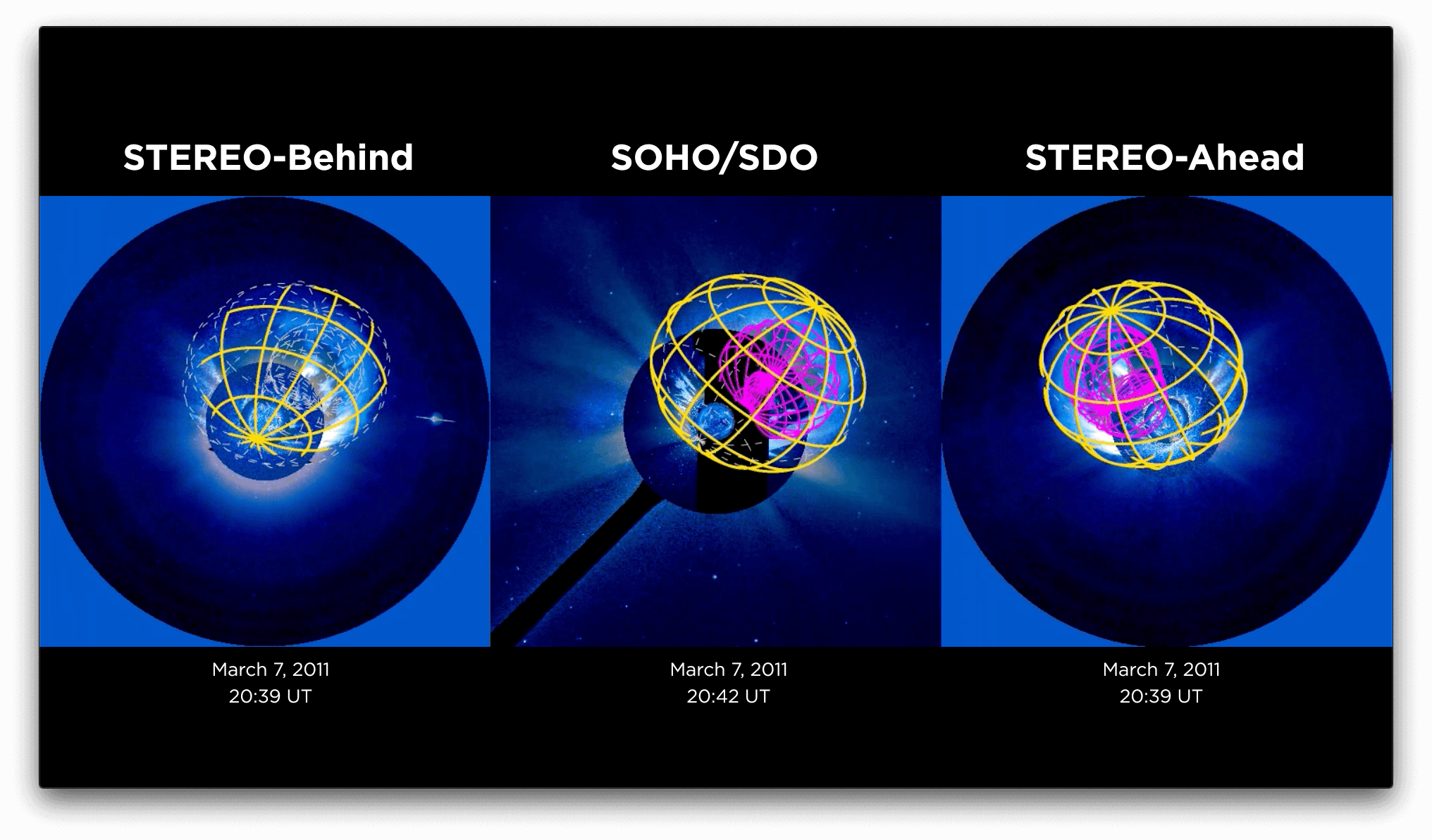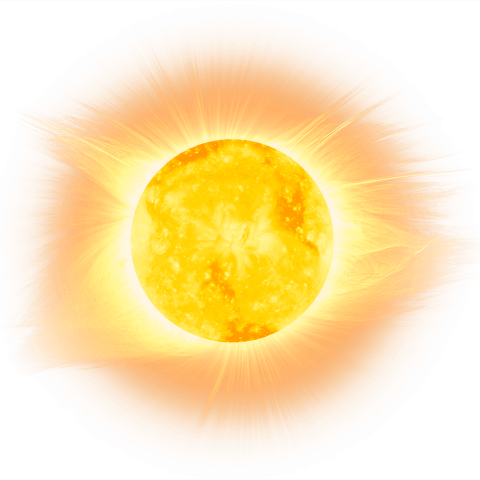Our Contribution
Imaging the Sun in 3D
NASA’s Solar TErrestrial RElations Observatory (STEREO) primarily examines coronal mass ejections, or CMEs. These explosive eruptions from the Sun can propel more than 10 billion tons of the Sun’s magnetized atmosphere into interplanetary space at speeds exceeding 3 million mph (5 million kph). When they impact Earth’s magnetosphere, CMEs can produce severe geomagnetic storms and other space weather that can interfere with—and even destroy—satellite operations and communications, shut down power systems on the ground, and endanger the lives of astronauts.





